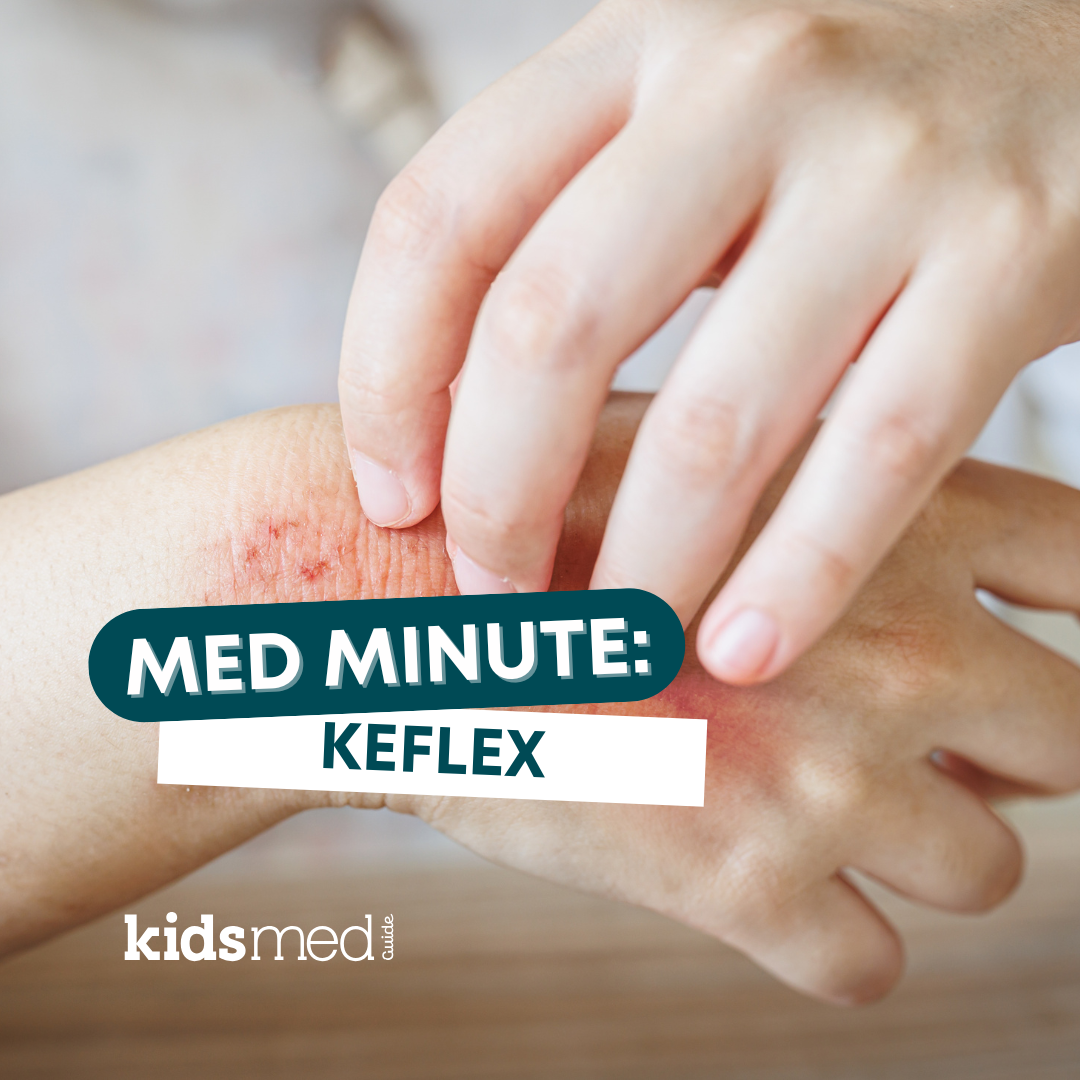Med Minute: Cephalexin (Keflex)

This Med Minute guide covers cephalexin (Keflex), an antibiotic commonly prescribed for bacterial infections such as skin infections, strep throat, and urinary tract infections.
It works by stopping bacteria from growing and replicating, often requiring a 7 to 10-day course.
Keep reading for quick facts on uses, dosing, side effects, and tips for giving it to your child!
What's it commonly used for?
- Treating bacterial infections: skin and tissue infections, strep throat, urinary tract infections, bone or joint infections, pneumonia
- Preventing bacterial infections (prophylaxis): dental procedures
How does it work?
- It kills bacteria by preventing bacteria from building cell walls and preventing bacterial cells from replicating.
- Cephalexin is a “time-dependent killer” that stops bacterial infections slowly, so therapy is often long, around 7-10 days.
What's the dose?
- Varies depending on weight and what you are treating
- The dose range is very varied and wide (25-100 mg/kg/day up to standard adult doses)
- Usually given 2-4 times per day
What are the most common side effects?
- Stomach upset, vomiting, or diarrhea
How should my child take it?
- Take with or without food, taking with meals may reduce stomach upset
- Shake the suspension well and use the measuring device provided
- Store suspension in the refrigerator
The information in this guide does not include a comprehensive list of all possible side effects, contraindications, or warnings associated with drug use. This content is for educational and entertainment purposes only and aims to quickly provide caregivers with the most common counseling points for pediatric medications. It does not replace professional medical advice, nor does it supersede information found on a pharmacy label or drug package insert. Always read the complete package insert before administering medication to your child. Consult your healthcare provider for medical guidance, and call 911 in case of an emergency. Kids Med Guide is not liable for your interpretation or reliance on this material. You assume full responsibility for its use and any resulting decisions. For details, please see our Privacy Policy and Medical Content Policy.
The following reference was used to compile this information:
DailyMed—CEPHALEXIN suspension. (n.d.). Retrieved June 18, 2025, from https://www.dailymed.nlm.nih.gov/dailymed/drugInfo.cfm?setid=22ab5dba-bfce-498d-a644-9ca0e343b1cf



